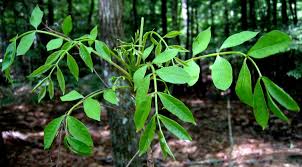Urushiol and Poison Sumac
If you were a kid that spent a lot of time outside, you probably heard your mom or dad tell you watch out for poisonous plants, like poison ivy, poison oak, and poison sumac. It is a good thing that you listened to your parents, but their warning may not have always kept you safe.
Poison ivy and poison oak fall under the “leaves of three category,” but poison sumac can have anywhere from 7-13 leaves on a stem. Sumac is a woody shrub with leaves arranged in pairs and may have glossy, pale yellow or cream-colored berries. Just like poison oak and poison ivy, poison sumac contains a poisonous oil called urushiol. For most people, coming into contact with urushiol triggers an allergic reaction.
Symptoms and Treatment
 Symptoms typically appear 1 to 2 days after coming in contact with the plant. Typical symptoms of poison sumac include:
Symptoms typically appear 1 to 2 days after coming in contact with the plant. Typical symptoms of poison sumac include:
- Red streaks or patches
- Rash
- Itching
- Swelling
- Blisters
Most people aren’t aware they have come into contact with a poisonous plant until the rash appears a few days later. However, if you suspect you have touched poison sumac, even before you notice a rash, you should:
- Wash the area with lukewarm soapy water. You may be able to rinse off some of the oil and prevent spreading your rash to others.
- Wash your clothing and anything else that could have come into contact with the poisonous plant.
Once you notice a rash, you can begin to treat it, and believe it or not, the best thing you can do is simply leave it alone. Scratching the rash can cause an infection, which will only make matters worse.
To ease the itch, you can add a colloidal oatmeal treatment or cup of baking soda to lukewarm bath water and bathe in it for a short amount of time. Another way to ease the itch is by applying over-the-counter topical ointments such as calamine lotion or hydrocortisone cream, applying a cool compress, or by taking antihistamine pills.
When to See a Doctor
While reactions to poison sumac are typically treated at home, they can sometimes be severe enough to require a trip to your local FastMed Urgent Care. Visit us if:
- The rash affects your face or genitals
- The blisters are oozing pus
- You have a fever greater than 100℉
- The rash doesn’t get better after a few weeks
For more information about rashes and reactions, check out “What’s That Rash?”